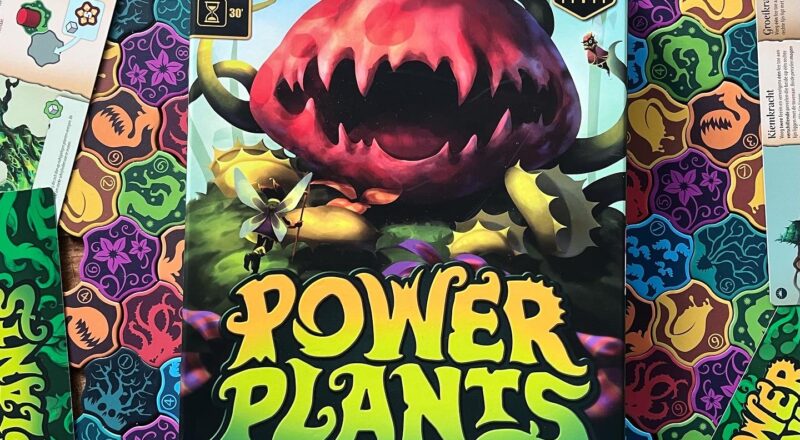Power Plants is not a game about large grey structures where energy is generated for the insatiable human hunger for power, but a game about large gardens full of magical plants where magic is generated for a red wizard’s insatiable hunger for magic. In Power Plants, players try to gain control over the various fields of a collective garden. To win, players cunningly deploy their army of sprites and their green thumbs, and by plotting and repotting, they plant their possible victory. Beware though: you will reap what you sow….
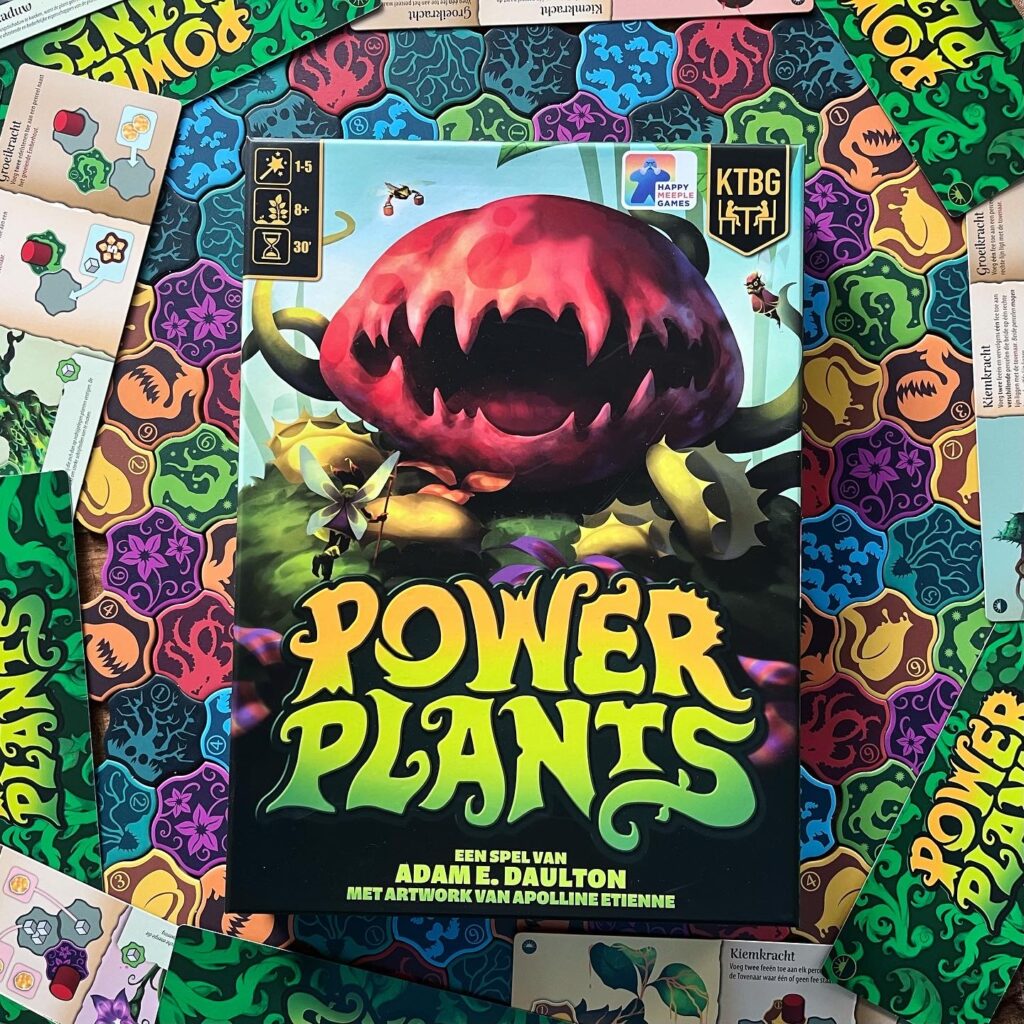
Goal and setup
In Power Plants, players work on a collective garden full of magical and powerful plants. Although everyone works on the same garden, Power Plants is not a cooperative game. Players may work on the garden together and help each other involuntarily, but they do not try to help each other to victory. By sprouting and growing new plants, players try to gain control of the garden with their fairies to get the most gems (points). The player with the most points wins.
At the beginning of a game of Power Plants, players choose a set of different plants with different effects. Of each plant, they place one tile on the table (adjacent) and the remaining tiles (depending on the number of players) go into the bag. Each player gets a set of fairies in his or her colour and two tiles to start growing their plans and plants.
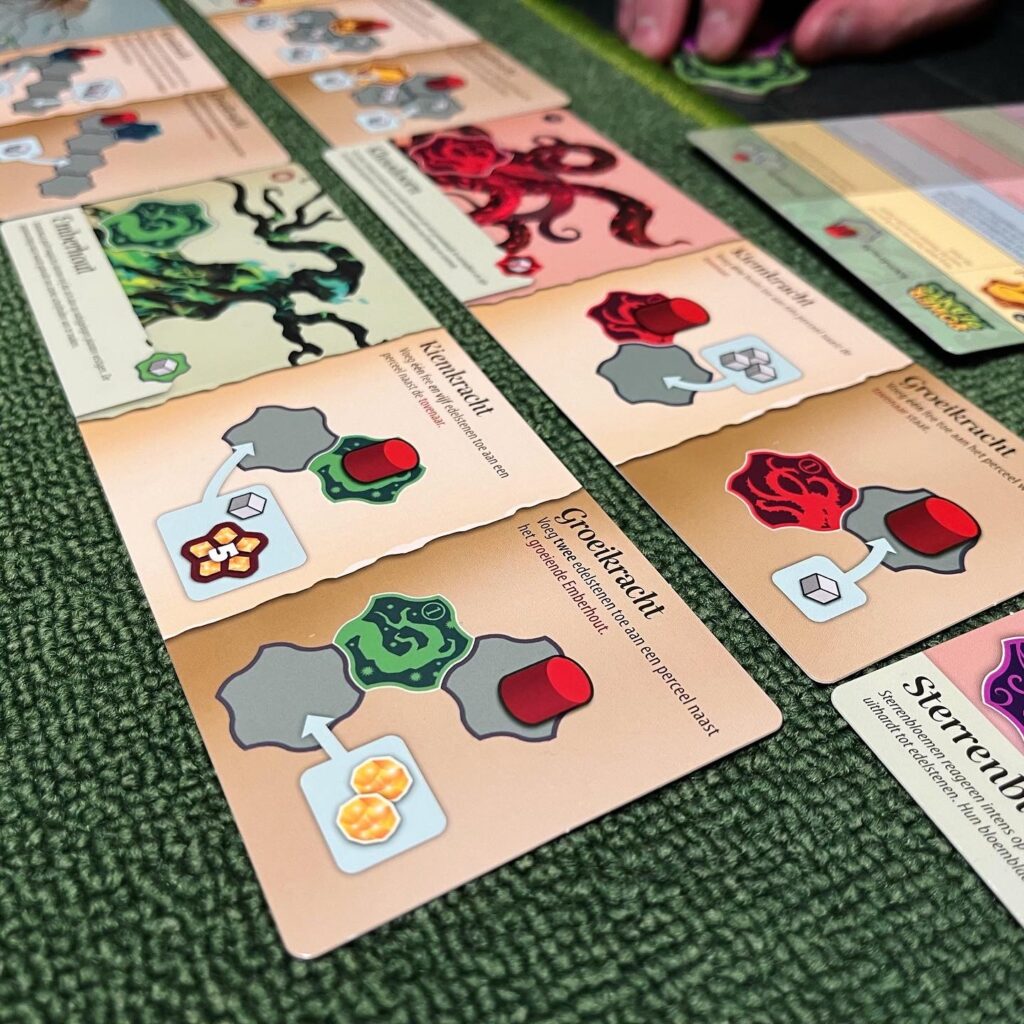

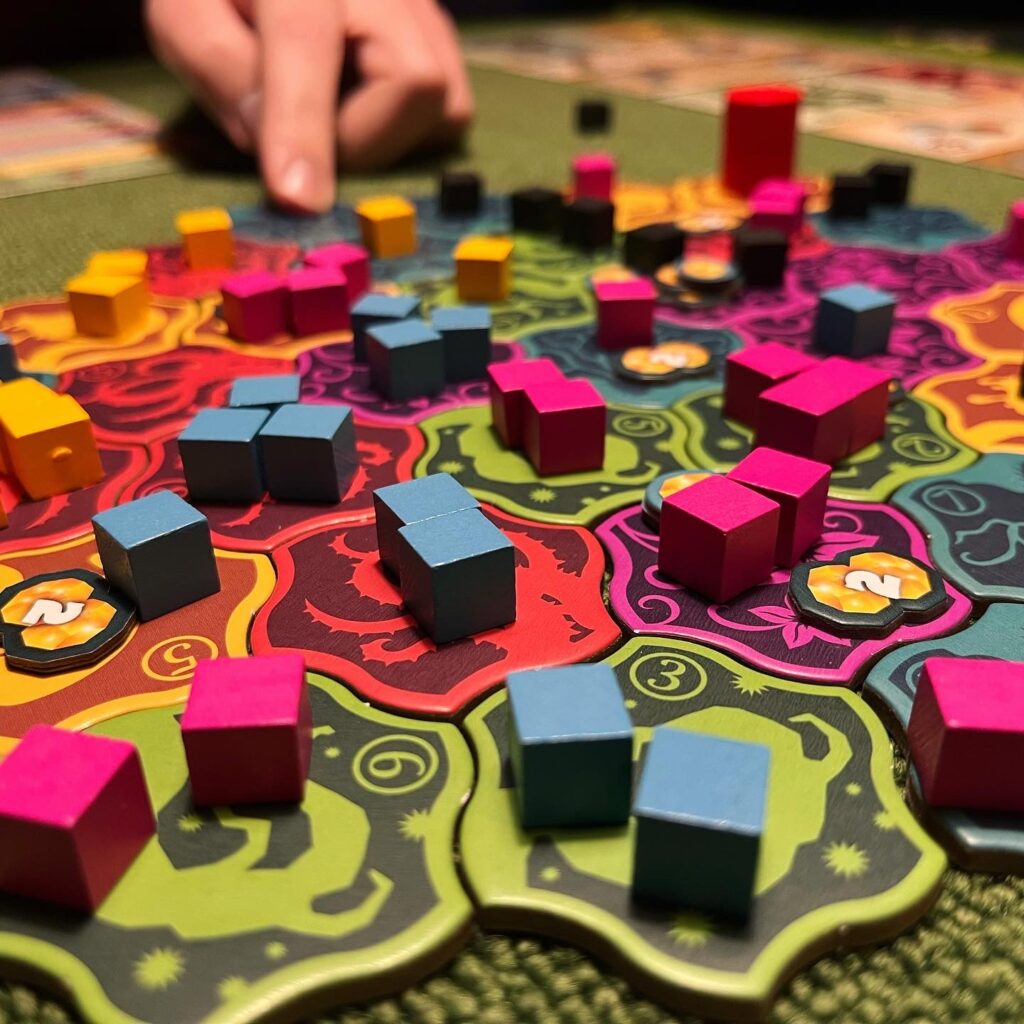
Gameplay
In this magical garden power plants thrive. Each plant has a plant and growth power that players use to harvest their victory. Each turn, the active player chooses one of the two patches of land from his or her hand. This player adds this tile to the garden. A tile must be planted adjacent to current patches of land and must be able to be physically moved between existing tiles. After this, the player faces a new choice.
The active player can choose to apply the plant power of the tile just placed or the growth power of adjacent tiles. A plant power is often very strong, but by activating growth powers, you can combine a lot of actions. By placing tiles, the garden gets bigger and bigger, which means there are more and more opportunities to apply lots of growth actions. By placing a certain tile, you can unintentionally (plant) opponents.
Through different actions, players will (re)place their sprites across the garden in different ways as an army occupies that land. As the garden grows, large fields of different adjacent colours emerge. Fields of the same colour, depending on the size of the field, yield gems (points) for the player who has such a field under his or her control. During the game, players also collect gems in other ways. The biggest collector with the most shiny loot wins.
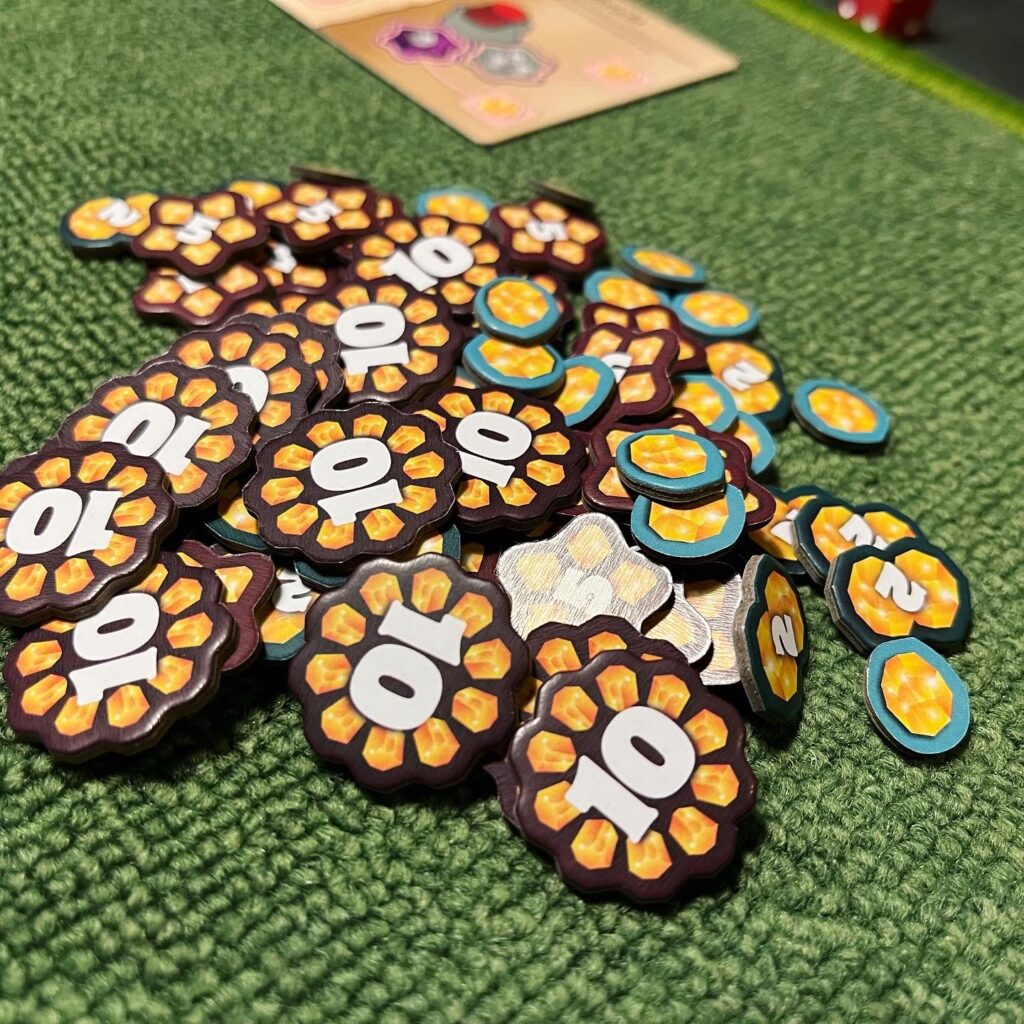
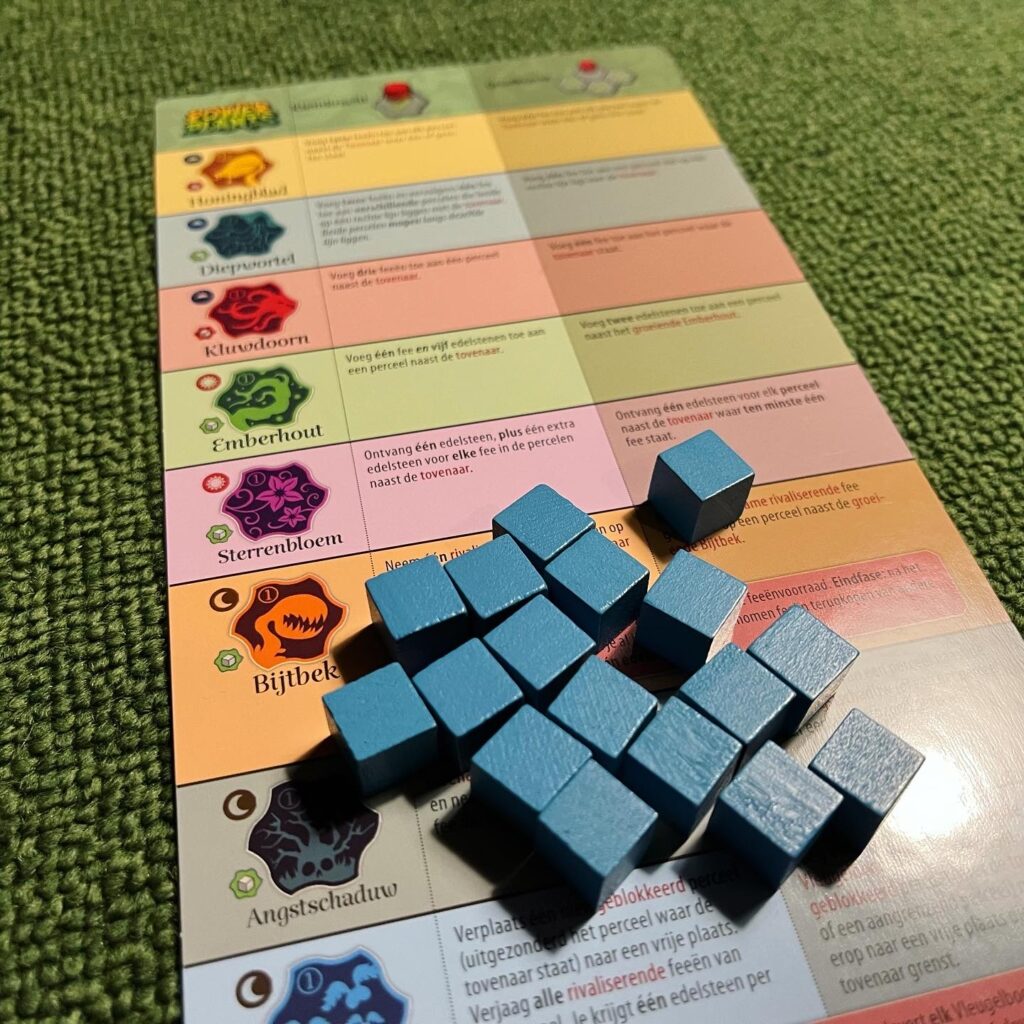
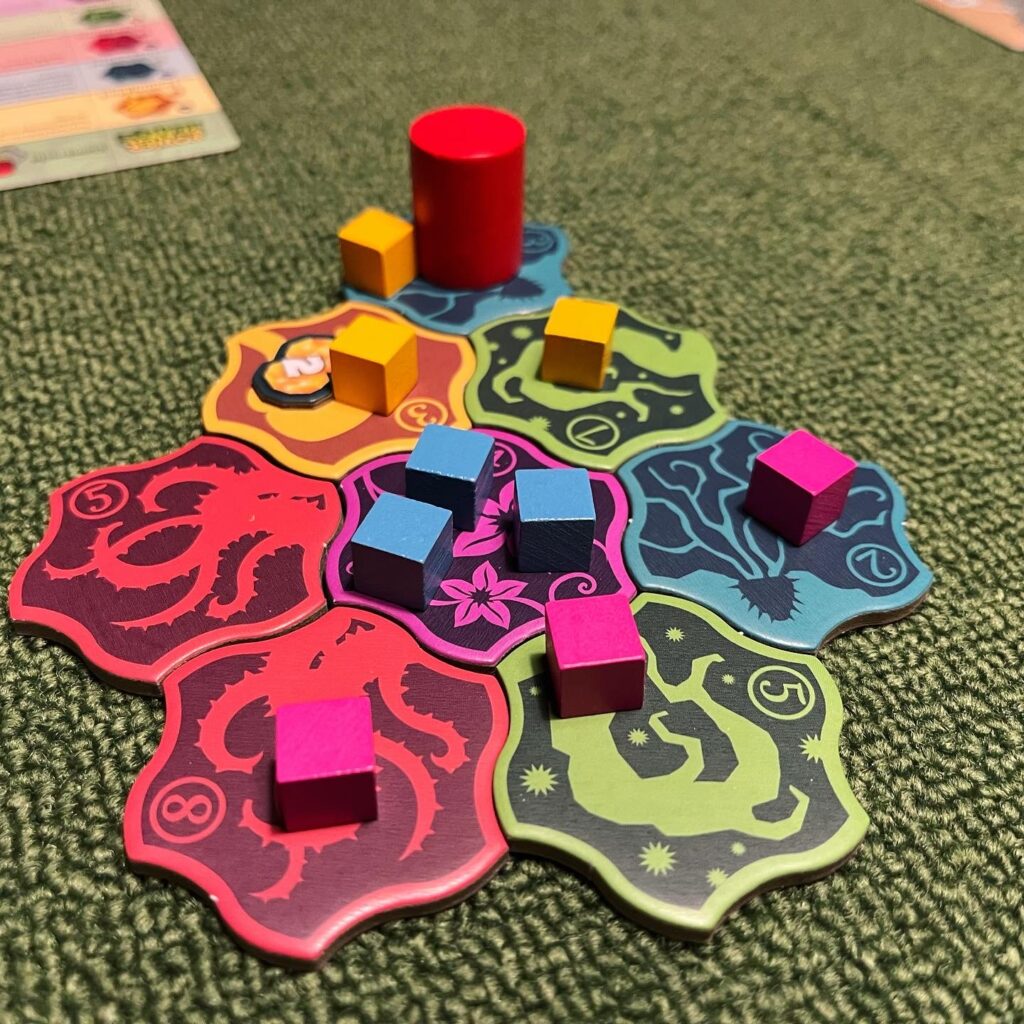
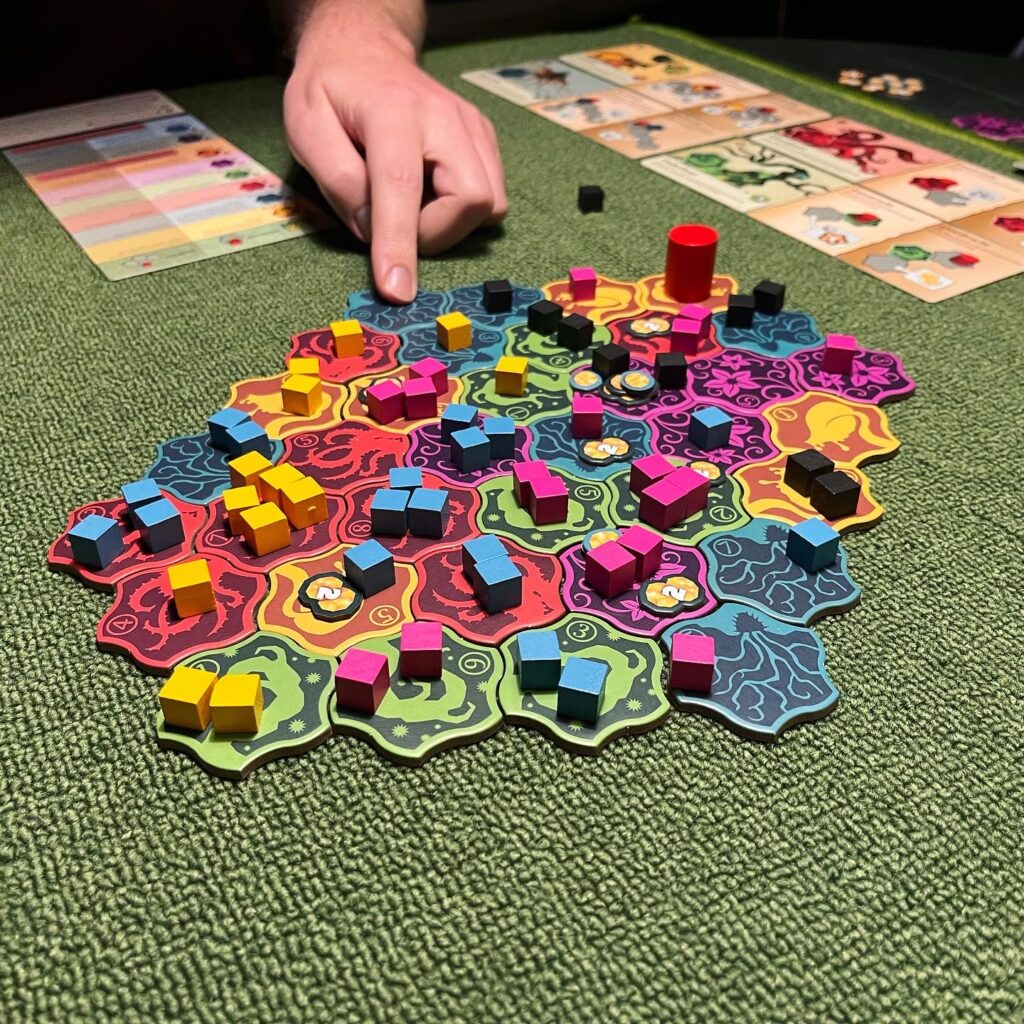
Verdict
In this colourful game, each plant has a variant and, depending on the variant, certain special powers that players apply, making Power Plants a highly varied game. Potential players might draw comparisons with the various ingredient chips from Quacks of Quedlinburg. Depending on the ingredients chosen, that game can change drastically and it this similar for Power Plants. Apart from this modularity Power Plants does not resemble this aforementioned game in any way.
Power Plants uniquely and dynamically combines game elements that a player might be familiar with from area control games, tile laying games and engine builders. A hefty combination of game elements, but in a manageable package. Like other Kids Table Games, it is a heavier game well suited for families where gaming madness has been instilled from conception. For the youngest or inexperienced players, a beginner’s mode is included within the rulebook. The biggest barrier for new players is the distinction between activating growth powers and plant powers, but once players grasp this distinction and the difference between the different special abilities of the different plants, they can harvest until they’re happy.

